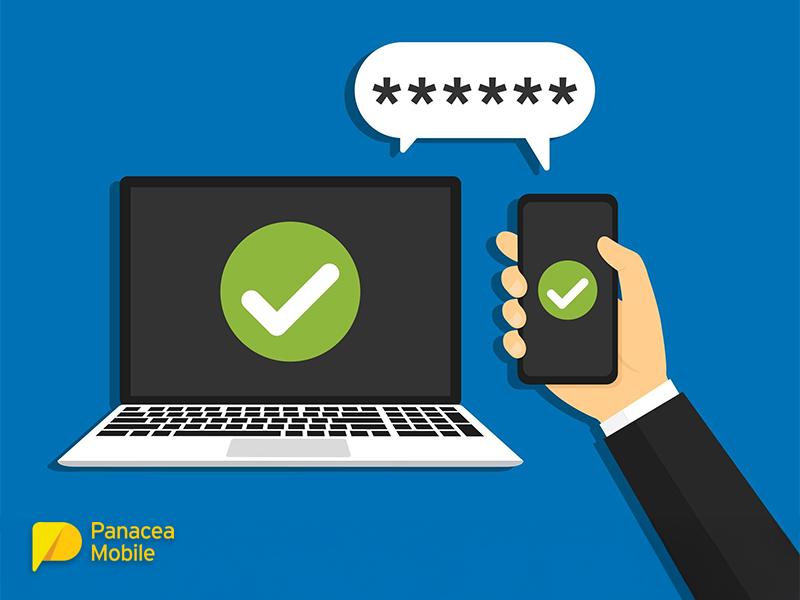Your password just isn’t enough anymore. Cyber criminals are getting smarter, and that single line of defence you’ve relied on for years is cracking under pressure from sophisticated attacks like phishing schemes and credential stuffing.
The solution is simple: add a second layer of protection that turns your mobile phone into a security fortress.
Two-factor authentication (2FA) requires both “something you know” (your password) and “something you have” (your mobile device).
By the end of this article, you’ll understand why mobile messaging through SMS and USSD remains one of the most practical and widely accessible methods for implementing robust 2FA, plus how to address common security concerns while maximising protection for your business and customers.
Why SMS-Based 2FA Works for Everyone
The beauty of SMS-based authentication lies in its simplicity. After entering your password, you receive a one-time password (OTP) directly to your phone via text message. No special apps required. No complex setup procedures. Just your regular mobile phone doing what it does best!
This approach delivers two significant advantages that make it ideal for businesses serving diverse customer bases. First, SMS reaches virtually every mobile phone on the planet. Your customers don’t need smartphones, internet connections, or technical expertise to participate in your security ecosystem. A basic phone from 2010 works just as well as the latest flagship device.
Second, user adoption rates soar because the process feels familiar. People already know how to receive and read text messages. They don’t need to download authenticator apps, remember backup codes, or navigate complex interfaces. This intuitive experience translates directly into better security compliance across your entire user base.
The Hidden Power of USSD for Advanced Security
While SMS gets most of the attention, USSD (Unstructured Supplementary Service Data) offers unique advantages that many businesses overlook. Unlike SMS, which sends a message and closes the connection, USSD creates a live, session-based dialogue between your system and the user’s device.
This real-time connection brings two compelling benefits. USSD works without internet connectivity, making it incredibly reliable in areas with poor network coverage or for users with limited data plans. Your authentication system remains accessible regardless of connection quality, ensuring consistent security coverage across all customer segments.
The interactive nature of USSD also enables more sophisticated authentication flows. Instead of simply sending a code, you can create menu-driven confirmations, session-based queries, and multi-step verification processes. These dynamic interactions can be significantly more resistant to certain types of attacks compared to static SMS codes.
Financial institutions across emerging markets have already discovered this advantage. Banks use USSD for secure account access, transaction confirmations, and balance inquiries, all without requiring internet access. This proven track record in high-security applications demonstrates USSD’s reliability for protecting sensitive operations.
Read more: Unlocking Winning Strategies: How Panacea’s Bulk SMS Platform Powers the Betting Industry
Addressing the Elephant in the Room: Security Concerns
Let’s be honest about the limitations. SMS-based 2FA faces real security challenges, including SIM swapping attacks where criminals transfer your phone number to their device, and vulnerabilities in the SS7 protocol that carriers use for message routing. These aren’t theoretical risks – they’re documented attack vectors that security professionals rightfully worry about.
However, dismissing mobile messaging entirely misses the bigger picture. The question isn’t whether SMS and USSD are perfect security solutions. The question is whether they provide meaningful protection improvement over passwords alone while remaining accessible to your entire customer base.
The answer is absolutely yes, especially when you implement smart layering strategies.
- Combine mobile authentication with fraud detection systems that flag unusual login patterns.
- Educate users about phishing attempts that try to trick them into sharing their codes.
- Monitor authentication requests in real-time to spot suspicious activity before it becomes a breach.
- Consider geographic restrictions for high-risk actions, rate limiting for authentication attempts, and user behaviour analysis to identify anomalies.
These complementary security measures work together with mobile messaging to create a robust defence system that’s both practical and protective.
Building Your Mobile Authentication Strategy
The most effective 2FA implementations recognise that different situations call for different approaches. SMS works perfectly for everyday account access, while USSD might be better suited for high-value transactions or users in low-connectivity environments. Some businesses even offer both options, letting customers choose based on their preferences and circumstances.
Start by assessing your user base demographics and technical capabilities. If you’re serving customers in rural areas or emerging markets, USSD’s offline functionality becomes especially valuable. If your audience spans multiple countries with varying mobile infrastructure, SMS provides the broadest compatibility.
Remember that the best security system is the one people actually use consistently. A slightly less secure method with 95% user compliance often provides better overall protection than a theoretically superior system that only 60% of users adopt properly.
The Future is Mobile-First Security
Mobile messaging authentication isn’t going anywhere. While newer technologies like authenticator apps and hardware keys serve important roles in comprehensive security strategies, SMS and USSD remain indispensable for reaching broad audiences and ensuring inclusive security coverage.
The key lies in thoughtful implementation that acknowledges both the strengths and limitations of mobile messaging while building appropriate safeguards around these technologies. Your customers deserve security that protects them without excluding them.
For businesses ready to implement reliable and accessible 2FA strategies, Panacea Mobile’s robust SMS and USSD gateways provide the foundation for secure authentication systems that work for everyone, everywhere. Because true security isn’t just about having the most advanced technology – it’s about protecting all your users with solutions they can actually use.





